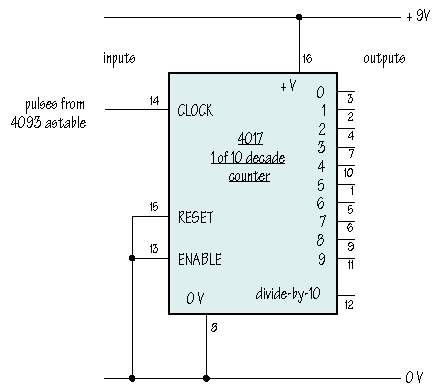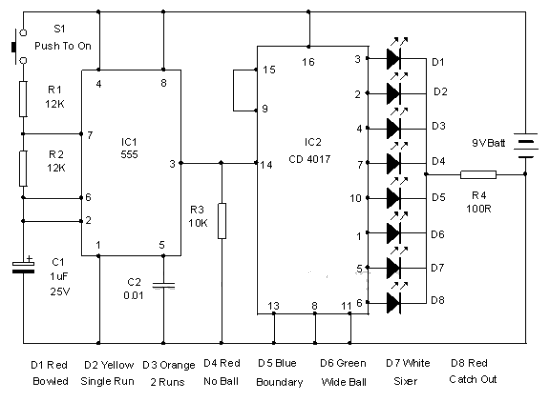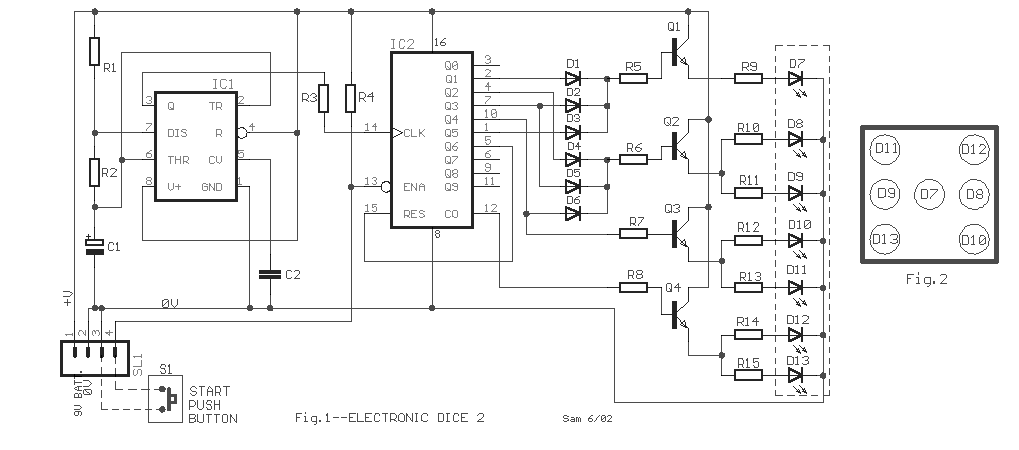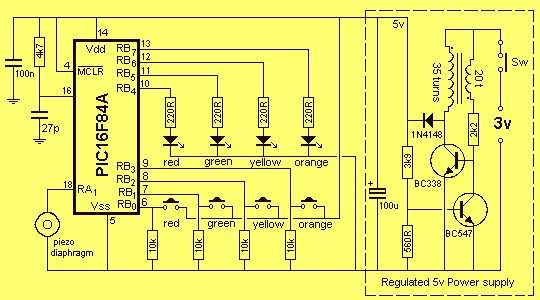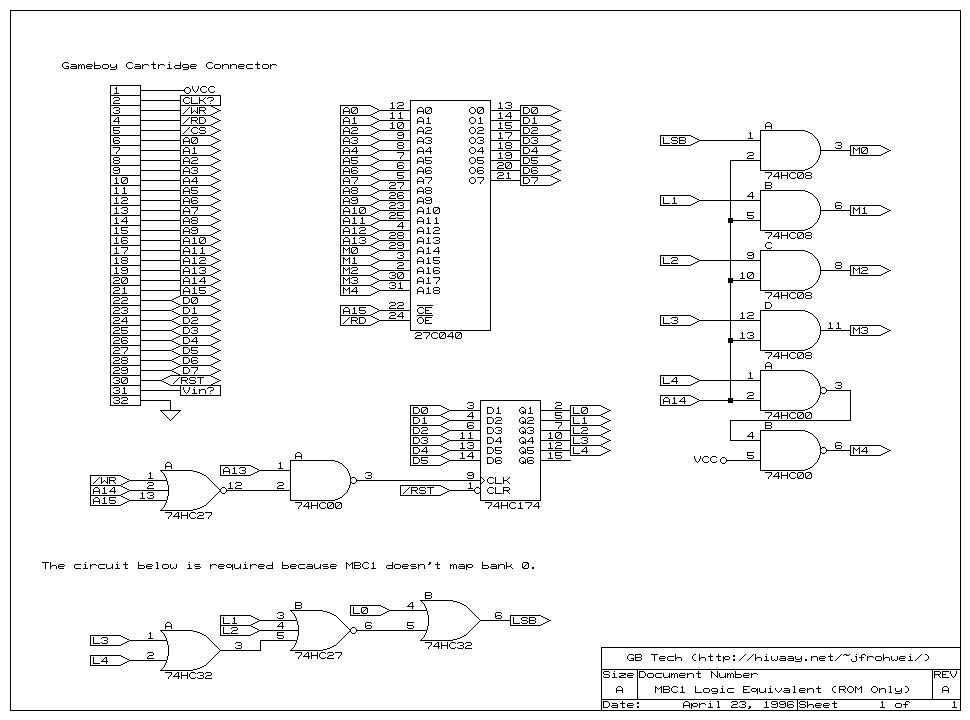
Reflex Action Game
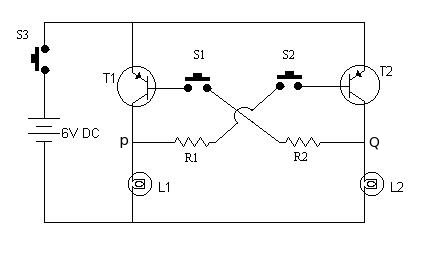
This circuit is designed for quiz events where two participants press their buttons to answer questions. The participant who presses their button first gets the opportunity to answer first, as indicated by the lamps associated with each button. When switch S3 is in the ON position, the base circuits of both transistors remain open, preventing current flow in their respective collector-emitter circuits, which keeps both lamps off. If switch S1 is pressed first, transistor TR1 receives negative base voltage through resistor R1, causing it to conduct and lamp L1 to illuminate. This action results in a voltage drop at point P to nearly zero, meaning that if push-button S2 is pressed afterward, transistor TR2 will not receive base voltage and will remain non-conducting. Therefore, when S1 is pressed first, lamp L1 will glow, preventing lamp L2 from lighting up. This ensures that only one lamp glows at any given time, allowing the circuit to reliably determine which participant pressed their button first.
The circuit operates using two NPN transistors, TR1 and TR2, which are responsible for controlling the lamps L1 and L2. The configuration ensures that when one button is pressed, it activates its corresponding transistor while simultaneously preventing the other transistor from conducting. The circuit relies on the principle of transistor switching, where the application of a voltage at the base terminal allows current to flow through the collector-emitter path.
In the initial state, with switch S3 in the ON position, both transistors are in a non-conducting state. As soon as one participant presses their button, the corresponding transistor is biased into conduction. For instance, pressing S1 sends a negative voltage through R1 to the base of TR1, turning it on. This results in lamp L1 illuminating, indicating that participant one has pressed their button first. The drop in voltage at point P effectively disables TR2, ensuring that lamp L2 remains off.
This design is particularly effective in quiz scenarios where quick response times are crucial. The circuit's simplicity allows for easy implementation and troubleshooting, making it suitable for various educational and competitive environments. The choice of components, such as the transistors and resistors, should be made based on the required current and voltage ratings to ensure reliable operation. Overall, this circuit provides a straightforward and effective solution for determining the first responder in quiz competitions.This is a very interesting and simple circuit. This also can be used in quiz events, where two participants hit their button to answer. The participant, who pressed his button first, will get a chance to answer first. This circuit will resolve which participant hit the button first, by glowing the lamps associated with the button. When S3 is in ON position, base circuits of both the transistors remains open and thus no current flows in their respective collector-emitter circuits. Hence, both the lamps remain off. Now, let S1 be pressed first, the transistor TR1 gets negative base voltage through R1. Due to this transistor TR1 starts conduction, and lamp L1 begins to glow. On account of this action the voltage at point P drops to nearly zero value and if the push-button S2 is pressed in this condition, the transistor TR2 gets no base voltage and it will remain non-conduction.
Similarly when S1 is pressed first, the lamp(L2) associated with S1 will glow preventing L1 to glow. Since, at a time only one lamp will glow, this circuit will always give correct judgment. All the material on this website is copyright property of Material on this site is for personal use only and can not be used for any commercial activity without written permission of Use the information provided within this website at your own risk. Information within this website is provided as-is without warranty or guarantee of any kind. Please read Copyright and Disclaimer notice carefully. 🔗 External reference
The circuit operates using two NPN transistors, TR1 and TR2, which are responsible for controlling the lamps L1 and L2. The configuration ensures that when one button is pressed, it activates its corresponding transistor while simultaneously preventing the other transistor from conducting. The circuit relies on the principle of transistor switching, where the application of a voltage at the base terminal allows current to flow through the collector-emitter path.
In the initial state, with switch S3 in the ON position, both transistors are in a non-conducting state. As soon as one participant presses their button, the corresponding transistor is biased into conduction. For instance, pressing S1 sends a negative voltage through R1 to the base of TR1, turning it on. This results in lamp L1 illuminating, indicating that participant one has pressed their button first. The drop in voltage at point P effectively disables TR2, ensuring that lamp L2 remains off.
This design is particularly effective in quiz scenarios where quick response times are crucial. The circuit's simplicity allows for easy implementation and troubleshooting, making it suitable for various educational and competitive environments. The choice of components, such as the transistors and resistors, should be made based on the required current and voltage ratings to ensure reliable operation. Overall, this circuit provides a straightforward and effective solution for determining the first responder in quiz competitions.This is a very interesting and simple circuit. This also can be used in quiz events, where two participants hit their button to answer. The participant, who pressed his button first, will get a chance to answer first. This circuit will resolve which participant hit the button first, by glowing the lamps associated with the button. When S3 is in ON position, base circuits of both the transistors remains open and thus no current flows in their respective collector-emitter circuits. Hence, both the lamps remain off. Now, let S1 be pressed first, the transistor TR1 gets negative base voltage through R1. Due to this transistor TR1 starts conduction, and lamp L1 begins to glow. On account of this action the voltage at point P drops to nearly zero value and if the push-button S2 is pressed in this condition, the transistor TR2 gets no base voltage and it will remain non-conduction.
Similarly when S1 is pressed first, the lamp(L2) associated with S1 will glow preventing L1 to glow. Since, at a time only one lamp will glow, this circuit will always give correct judgment. All the material on this website is copyright property of Material on this site is for personal use only and can not be used for any commercial activity without written permission of Use the information provided within this website at your own risk. Information within this website is provided as-is without warranty or guarantee of any kind. Please read Copyright and Disclaimer notice carefully. 🔗 External reference
